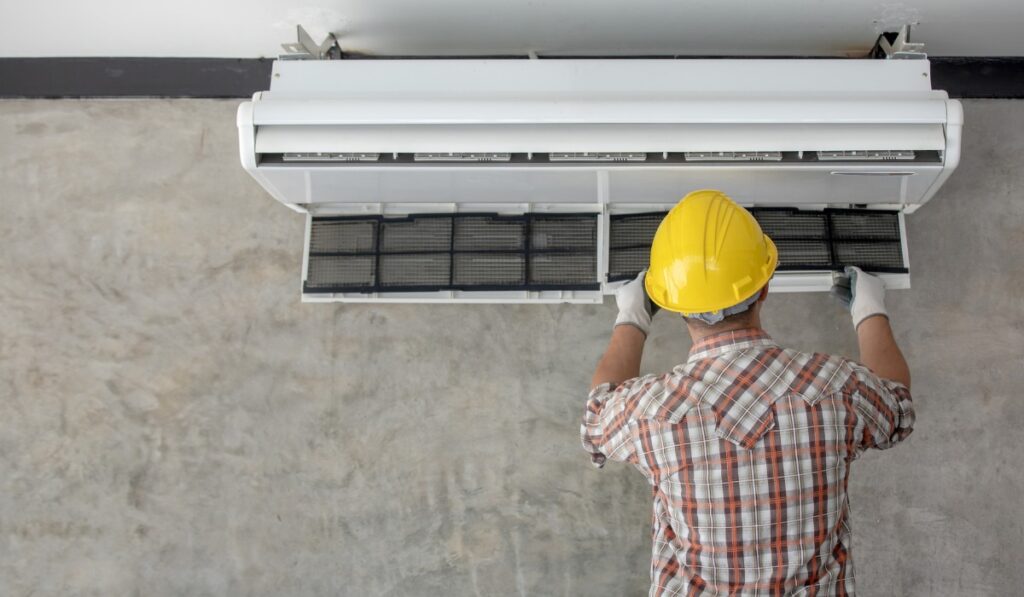Investing in a new air conditioning system is a significant decision that requires careful planning and execution. Proper installation is crucial to ensure optimal performance, energy efficiency, and longevity of your AC unit. In this comprehensive guide, we’ll walk you through the intricate process of air conditioning installation, highlighting the key steps and considerations to keep in mind.
Step 1: Choosing the Right Air Conditioning System
Before embarking on the installation process, it’s essential to determine the appropriate air conditioning system for your home or commercial space. Factors such as square footage, insulation levels, climate conditions, and the number of occupants play a crucial role in selecting the right size and type of AC unit.
Factors to Consider When Choosing an AC System
- Square footage of your living space
- Number of rooms and occupants
- Insulation levels and energy efficiency ratings
- Local climate conditions
- Energy efficiency goals
Understanding Different AC System Types
Air conditioning systems come in various types, each with its own set of advantages and considerations. Some popular options include:
- Central air conditioning units
- Ductless mini-split systems
- Window air conditioners
- Portable air conditioners
A professional HVAC technician can help you evaluate your needs and recommend the most suitable system for your specific requirements.
Step 2: Hiring a Professional HVAC Contractor

Installing an air conditioning system is a complex task that requires specialized knowledge, skills, and tools. It’s crucial to hire a licensed and experienced HVAC (Heating, Ventilation, and Air Conditioning) contractor to ensure a safe and proper installation.
Benefits of Working with a Professional HVAC Contractor
- Proper sizing and selection of the AC unit
- Adherence to local building codes and regulations
- Proper installation techniques and safety protocols
- Warranty coverage and post-installation support
Researching and Vetting Potential Contractors
Before hiring an HVAC contractor, it’s essential to research and vet their credentials, experience, and reputation. Here are some tips to help you find a reliable contractor:
- Ask for referrals from friends, family, or neighbors
- Check online reviews and ratings
- Verify their license and insurance coverage
- Request quotations and compare pricing
- Inquire about their warranty and service policies
Step 3: Site Preparation and Planning
Before the installation process begins, the contractor will evaluate the installation site to identify any potential obstacles or challenges. This evaluation may include:
- Measuring the space and assessing the layout
- Identifying suitable locations for outdoor and indoor units
- Checking for adequate ventilation and clearance
- Assessing the existing ductwork (if applicable)
Obtaining Necessary Permits and Approvals
Depending on your local regulations, you may need to obtain permits or approvals before proceeding with the installation. Your HVAC contractor will be familiar with the local requirements and can guide you through the process.
Step 4: The Installation Process
Preparing the Installation Area
Once the site evaluation is complete and all necessary permits are obtained, the contractor will begin preparing the installation area. This may involve:
- Clearing the area of any obstructions
- Creating access points for the outdoor unit
- Preparing the mounting surface for the indoor unit
- Installing or modifying ductwork (if applicable)
Installing the Outdoor Unit
The outdoor unit, also known as the condenser, is typically installed on a level, concrete pad or a suitable mounting platform. The contractor will ensure proper clearance and airflow around the unit.
Installing the Indoor Unit
The indoor unit, or the air handler, is typically mounted on a wall or ceiling. The contractor will connect the indoor unit to the outdoor unit using refrigerant lines and electrical wiring.
Indoor Unit Installation Considerations
- Proper placement for optimal airflow and distribution
- Leveling and secure mounting
- Connecting the indoor unit to the ductwork (if applicable)
- Installing drainage systems for condensation
Connecting the Refrigerant Lines
The refrigerant lines are responsible for circulating the refrigerant between the indoor and outdoor units. The contractor will carefully measure, cut, and connect these lines to ensure proper flow and prevent leaks.
Electrical Connections and Controls
The air conditioning system requires a dedicated electrical circuit and proper wiring connections. The contractor will ensure that the system is correctly wired and integrated with the thermostat or control system.
Step 5: System Testing and Final Checks

Once the installation is complete, the contractor will perform a thorough system test to ensure proper operation and identify any potential issues. This may involve:
- Checking refrigerant levels and pressure
- Testing the thermostat and control systems
- Monitoring the system for any unusual noises or vibrations
- Verifying airflow and temperature readings
Final Inspections and Approvals
Depending on your local regulations, a final inspection by a building inspector or authority may be required before the system can be officially put into use.
Obtaining Warranty Information and Maintenance Guidelines
After the successful installation and inspection, the contractor will provide you with warranty information and maintenance guidelines for your new air conditioning system. Proper maintenance is crucial to ensure optimal performance and extend the lifespan of your investment.
Step 6: Post-Installation Follow-up and Support
Scheduling Regular Maintenance
Regular maintenance is essential to keep your air conditioning system running efficiently and prevent potential breakdowns. Your HVAC contractor can help you establish a maintenance schedule and provide professional servicing when needed.
Addressing Any Issues or Concerns
If you encounter any issues or have concerns after the installation, don’t hesitate to contact your HVAC contractor. Reputable contractors will provide prompt and professional support to address any problems and ensure your satisfaction.
Installing a new air conditioning system is a significant investment that requires careful planning and execution. By following this comprehensive guide and working with a licensed and experienced HVAC contractor, you can ensure a smooth and successful installation process. Remember, proper installation is crucial for optimal performance, energy efficiency, and the longevity of your AC unit.
If you’re in the Los Angeles area and in need of professional air conditioning installation or maintenance services, look no further than TOP AC Inc. Our team of highly trained and experienced HVAC technicians is dedicated to providing exceptional service and ensuring your comfort throughout the year. Contact us today to schedule your appointment and experience the TOP AC Inc. difference.

